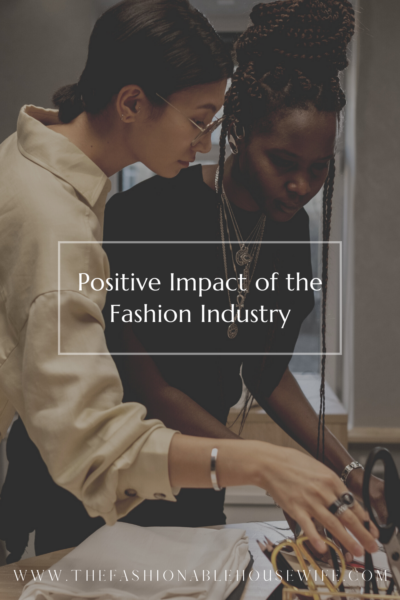
Even though the fashion industry is currently booming, there are several negative impacts of it as well. These include a significant impact on the environment and the economy. Fortunately, there are also many ways to mitigate these problems.
In 2018, economic profit increased for the second year in a row.
Considering the number of fashion conglomerates vying for your business, it’s no surprise that some are snagging the top spot. The economic oomph of the industry is a big part of the equation. The aggregate budget of the top ten corporations exceeds $70 billion. It turns the sector into a true gold mine for astute business owners. There are no pitfalls. Luckily, several ways to do your business stand out, like Forever 21 nonprofit.
Sustainability
Across the world, consumers are increasingly taking a more holistic approach to their consumption, and sustainability is no longer a buzzword but an integral part of the industry. They are demanding more than just fashion and are asking more questions about where products are made and who is responsible for the production process.
Currently, fashion is one of the least environmentally sustainable industries in the world, accounting for 2.1 billion tonnes of C02 emissions annually. In addition, the fashion industry uses significant amounts of water, wood, and land. It also requires chemicals and energy-intensive processes. However, the number of sustainable fashion products has increased fivefold in the past two years.
Performance inequalities in the fashion industry
Considering that women make up half the workforce and spend about three times as much on clothing, it is no surprise that the fashion industry has its share of performance inequalities. Women are more likely to consider quitting their jobs to take a shot at something more lucrative.
The fashion industry has posted a 20 percent drop in revenues in the past year. Supply chain disruption has also plagued the industry, making it hard to profit. And while there is a good chance that the sector is improving, there is still a lot of work to be done. In a recent study, McKinsey found that women design fewer than 50% of top womenswear brands.
Many companies have made a concerted effort to increase their female talent pool over the last few years. Among the companies proving their mettle are e-commerce pioneers, which have embraced gender diversity. And the best part is that women make up the majority of entry-level positions in the fashion industry.
Negative impact on the environment
Despite being one of the biggest polluters on the planet, the fashion industry is often portrayed as “green.” However, many of the activities that occur in this industry pose risks to the environment. Some of the common pollutants are chromium, nitrogen oxides, and suspended particulate matter.
The garment industry releases a large amount of waste into freshwater streams and rivers. The textile dyeing process also contributes to water pollution. These chemicals can cause serious health hazards.
Moreover, the fashion industry has a significant carbon footprint. The industry’s greenhouse gas emissions will increase by up to 50% in the next decade. In addition, it’s estimated that a single laundry load of polyester clothes can discharge 700,000 microplastic fibers into the ocean.
Up-cycling solutions
Using up-cycled materials can help to reduce environmental impact and save money in the process. It is essential in the current age of fast fashion at home, where new styles of clothes are available to the average consumer every week. It also has the potential to make you feel good by reducing waste.
The up-cycling trifecta: reuse, reuse and recycle can be applied to all products and materials. It is a good idea to learn about different processes and materials so that you can choose the best methods for your family.
There are numerous ways to improve your household’s sustainability, and a small change to your household budget can do a lot of good. In this article, we’ll examine some of the most common up-cycling practices and how they can positively affect the environment.